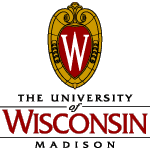Detecting manipulated remote call streams
Jonathon T. Giffin, Somesh Jha, and Barton P. Miller.
In 11th USENIX Security Symposium.
San Francisco, California, August 2002.
In the Internet, mobile code is ubiquitous and includes such examples as browser plug-ins, Java applets, and document macros. In this paper, we address an important vulnerability in mobile code security that exists in remote execution systems such as Condor, Globus, and SETI@Home. These systems schedule user jobs for execution on remote idle machines. However, they send most of their important system calls back to the local machine for execution. Hence, an evil process on the remote machine can manipulate a user's job to send destructive system calls back to the local machine. We have developed techniques to remotely detect such manipulation.
Before the job is submitted for remote execution, we construct a model of the user's binary program using static analysis. This binary analysis is applicable to commodity remote execution systems and applications. During remote job execution, the model checks all system calls arriving at the local machine. Execution is only allowed to continue while the model remains valid. We begin with a finite-state machine model that accepts sequences of system calls and then build optimizations into the model to improve its precision and efficiency. We also propose two program transformations, renaming and null call insertion, that have a significant impact on the precision and efficiency. As a desirable side-effect, these techniques also obfuscate the program, thus making it harder for the adversary to reverse engineer the code. We have implemented a simulated remote execution environment to demonstrate how optimizations and transformations of the binary program increase the precision and efficiency. In our test programs, unoptimized models increase run-time by 0.5% or less. At moderate levels of optimization, run-time increases by less than 13% with precision gains reaching 74%.

